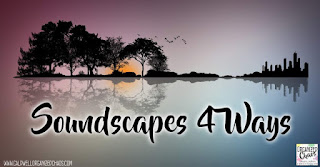With Black History Month around the corner, today I want to share some thoughts on how to recognize Black History Month in the music classroom appropriately, respectfully, and effectively. While the month of February should certainly not be the only time we share Black music and people with our students, it's an important opportunity to shine the spotlight on a historically marginalized people group.
DO celebrate Black excellence.
Black History Month is the perfect time to celebrate accomplishments of Black musicians throughout history, across genres, and in a variety of musical roles. I often use warmups at the beginning of class to do something related to a Black musician, and then take a few minutes to talk about the person, their life, and their contributions and achievements. If you're looking for some fresh names to explore, there are many contemporary Black musicians featured in these posts (please note most of these posts include non-Black people of color as well):
DO NOT focus only on slavery, or the music from that time.
So many teachers think only of slavery when they hear "Black history". There is so much more than that. There is certainly a place for discussions of slavery and what people did to overcome their circumstances and fight injustice, the powerful effect of music in enduring hardship etc, but it should not be the primary focus or treated as the defining feature of Black history.
DO incorporate more representation into the rest of the school year.
Yes, take advantage of the opportunity to really shine the spotlight and focus on Black excellence. But don't let February be the only time students see a Black face, hear Black music, or learn about Black history in your classroom. That is something that should be done all year long as a matter of course, not just for one month and not just when you're making a point to showcase Black people or culture.
DO NOT play into stereotypes.
Sure, hip-hop, gospel, and jazz are important parts of Black musical history and should be celebrated and recognized. But don't give your students the impression that Black people are only successful in certain genres or areas of music! Showcase a broad spectrum of performers, composers, producers, and dancers, working in traditional, bluegrass, classical, rock, and so much more, throughout history.
DO listen to, learn from, and compensate Black educators
I'm not sharing any specific lesson plans to use during Black History Month because I'm white. I am here to point my fellow educators in the right direction, not center my opinions or my ideas in something that should be centering and uplifting Black voices. If you are looking for ideas for what to teach during Black History Month, seek out Black voices. If you are going to purchase any resources to use to teach Black history, support Black authors and creators. Here are a few places to get started (many have shared insights and resources specifically on the topic of BHM music lessons, some have not, but all will help shape your understanding of how to do so better):
Franklin Willis (find his BHM webinar recording here)
Maria Ellis (Girl Conductor) (find her BHM PD session replay here)
Tosin Moji (Primarily Music) (search her store for BHM-themed lessons and resources here)
Brandi Pace (Decolonizing the Music Room) (see her post on BHM here)
Charissa Duncanson (Music With Mrs. Dunc)
Brandon Brown (The Griot B) (get his BHM album here)
Niki Addison (Ms. Niki) (get her single, Big Curly Afro, here)
I hope this helps steer you in the right direction as you prepare for Black History Month! If you know of more resources by Black authors, please share them in the comments below.




















